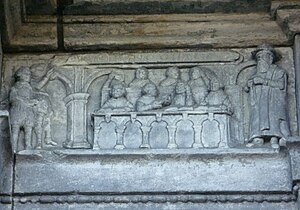
The history of education in Scotland in its modern sense of organised and institutional learning, began in the Middle Ages, when Church choir schools and grammar schools began educating boys. By the end of the 15th century schools were also being organised for girls and universities were founded at St Andrews, Glasgow and Aberdeen. Education was encouraged by the Education Act 1496, which made it compulsory for the sons of barons and freeholders of substance to attend the grammar schools, which in turn helped increase literacy among the upper classes.
The Scottish Reformation resulted in major changes to the organisation and nature of education, with the loss of choir schools and the expansion of parish schools, along with the reform and expansion of the Universities. In the seventeenth century, legislation enforced the creation and funding of schools in every parish, often overseen by presbyteries of the local kirk. The existence of this network of schools later led to the growth of the "democratic myth" that poor boys had been able to use this system of education to rise to the top of Scottish society. However, Scotland's University system did help to make it one of the major contributors to the Enlightenment in the 18th century, producing major figures such as David Hume and Adam Smith.
Religious divisions and the impact of industrialisation, migration and immigration disrupted the existing educational system and in the late nineteenth century it was reorganised and expanded to produce a state-funded national system of free basic education and common examinations. The reform of Scottish universities made them major centres of learning and pioneers in the admission of women from 1892. In the 20th century Scottish secondary education expanded, particularly for girls, but the universities began to fall behind those in England and Europe in investment and expansion of numbers. The government of the education system became increasingly centred on Scotland, with the final move of the ministry of education to Edinburgh in 1939. After devolution in 1999 the Scottish Executive also created an Enterprise, Transport and Lifelong Learning Department and there was significant divergence from practice in England, including the abolition of student tuition fees at Scottish universities.
